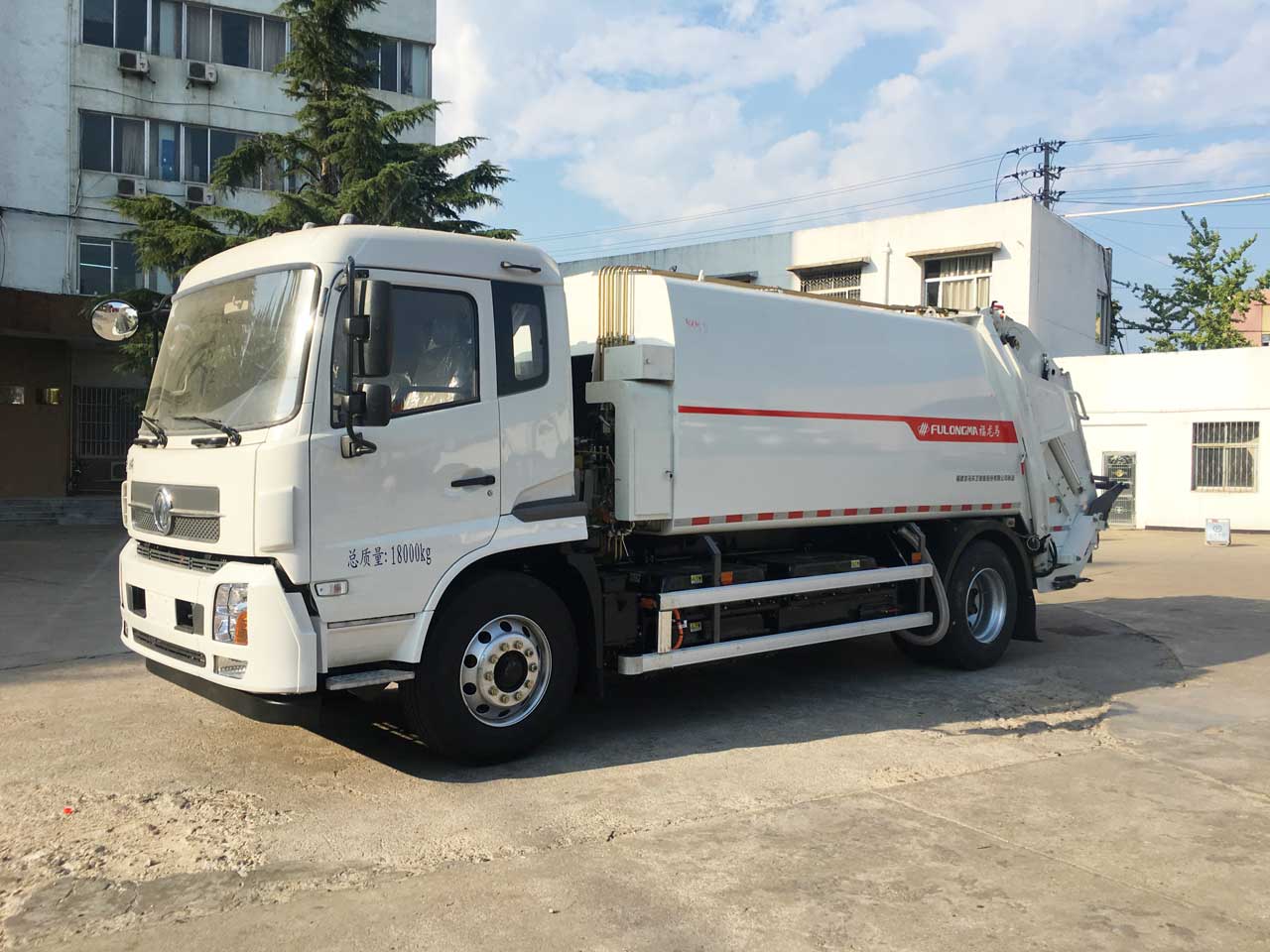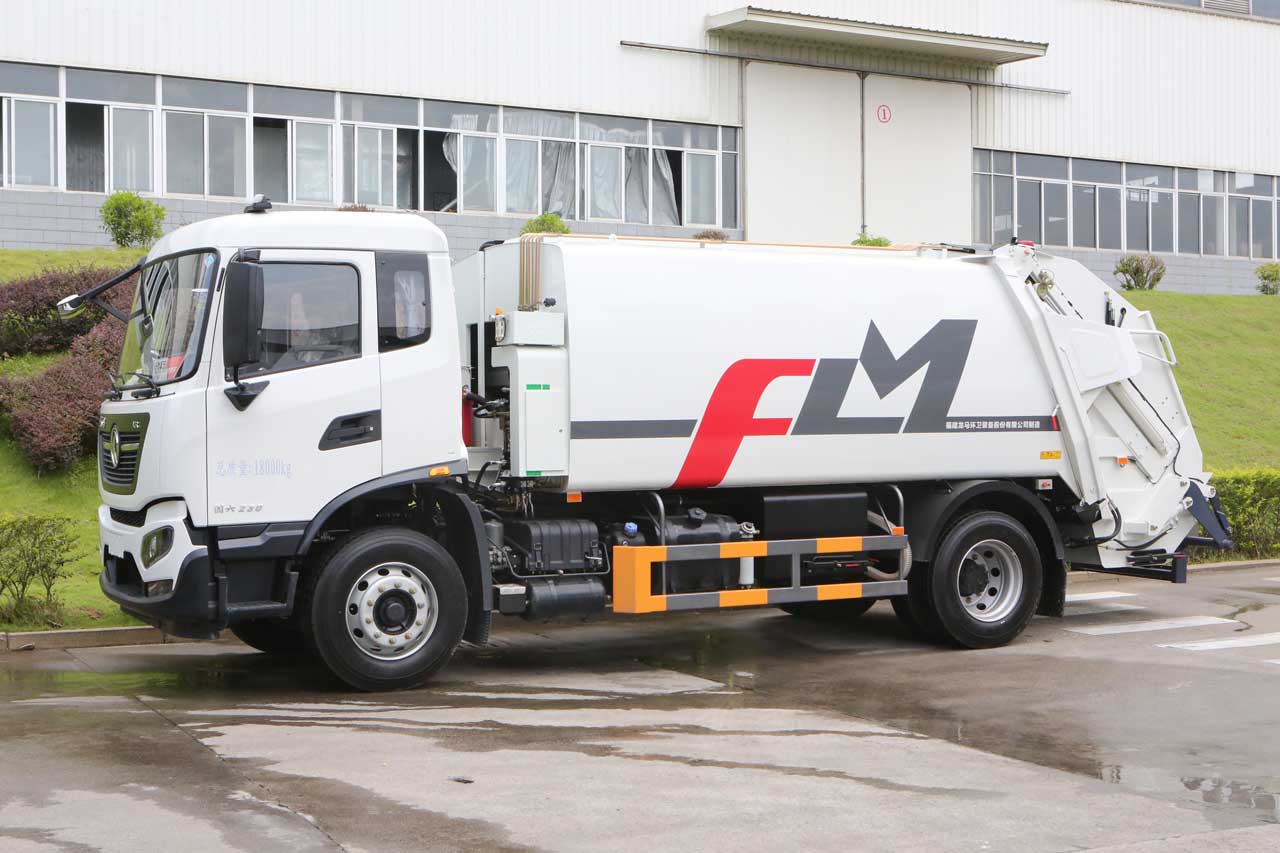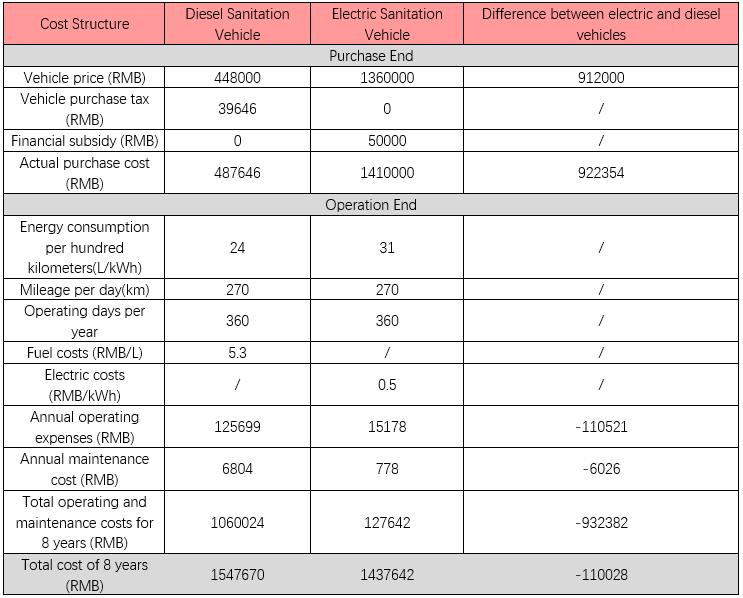In the operation of sanitation projects, the first important factor is personnel, and the second is vehicles. The significance of the cost of vehicles in sanitation projects is self-evident. With the rapid development of new energy technology today, many people in charge of environmental sanitation projects often face the question: Is it cost-effective to select diesel vehicles or new energy vehicles?
Here is a detailed analysis, I believe that after reading it, the answer would be clear:
Compared with traditional fuel vehicles, new energy sanitation vehicles have a higher purchase cost. However, due to the use of electricity as the power source, and the price of electricity is much lower than fuel costs, the overall operating cost is becoming more economical with the increasing usage time of the vehicle.
We selected FULONGMA’s 18-ton pure electric garbage compactor truck (model: ZBH5180ZYSEQABEV, price 1.36 million RMB) and diesel garbage compactor truck (model: ZBH5180ZYSDFE6, price 448,000 RMB) as the typical representatives of electric sanitation vehicles and diesel sanitation vehicles, to carry out cost estimation for the whole life cycle.
The replacement cycle of sanitation vehicles is generally 6-8 years. Considering that the warranty period of the battery and chassis drive motor of the above models is 8 years, we select 8 years as the life cycle estimation value.
Purchase end: The purchase cost of electric sanitation vehicles is RMB 445,000 higher than that of diesel sanitation vehicles.
1) Diesel sanitation vehicles: The vehicle purchase tax of diesel sanitation vehicles is 10% of the taxable price. We calculate according to the value-added tax rate of 13%. Diesel sanitation vehicles need to pay an additional vehicle purchase tax of about 40,000 RMB;
2) Electric sanitation vehicles: New energy sanitation vehicles are eligible for the purchase subsidies and vehicle purchase tax exemptions. The selected FULONGMA brand pure electric garbage compactor truck is included in the seventh batch of new energy vehicle promotion and application catalogs in 2020, in line with 2020 New Energy Subsidy Technical Standards. Therefore, according to the “Notice on Improving the Financial Subsidy Policy for the Promotion and Application of New Energy Vehicles” (Facial [2020] No. 86), it’s eligible for a purchase subsidy of RMB 50,000 per vehicle. It can be seen from this that the final purchase costs of electric sanitation vehicles and diesel sanitation vehicles are 784,000 RMB and 429,000 RMB respectively. The purchase cost of electric sanitation vehicles is 355,000 RMB higher than that of diesel sanitation vehicles.

(BEV Compression Refuse Collector – FLM5180ZYSDFBEVK)
Operation end: During the whole life cycle, the total operation and maintenance cost of electric sanitation vehicles is 930,000 RMB lower than that of diesel sanitation vehicles.
The costs of diesel sanitation vehicles and electric sanitation vehicles during the operation period mainly include energy consumption costs and maintenance costs.
1) Diesel sanitation vehicle: estimated based on data of the same type of vehicle, the fuel consumption per 100 kilometers corresponding to its D4.5NS6B190 engine is 24.4L. Based on this, we assumed that the fuel consumption per 100 kilometers of the diesel sanitation vehicle is 24.4L.
2) Electric sanitation vehicles: According to a report by the Beijing Evening News, the average power consumption of an 18-ton pure electric garbage compactor truck in the Haidian District of Beijing is 31.23kWh per 100 kilometers. Based on this, it is assumed that the power consumption of electric sanitation vehicles per 100 kilometers is 31.23kWh.
3) Assuming that the average driving speed of the sanitation vehicle is 45km/h, the daily driving time is 6 hours, and the number of operating days per year is 360 days, it can be calculated that the annual operating costs of the diesel sanitation vehicle and electric sanitation vehicle are 126,000 RMB and 15,000 RMB, respectively. The difference is nearly 10 times.
4) Sanitation vehicles need to be cleaned and maintained regularly, and a certain maintenance fee is paid every year. According to the data disclosed on the truck industry website, the maintenance cost per kilometer for diesel trucks is RMB 0.07, and the maintenance cost per kilometer for pure electric trucks is RMB 0.008. Based on this, it is estimated that the average annual maintenance costs of diesel sanitation vehicles and pure electric sanitation vehicles are 6804 RMB and 778 RMB respectively. Assuming the operating cycle is 8 years, the total operating and maintenance costs of diesel compression garbage trucks and pure electric compression garbage trucks within 8 years are 1.06 million RMB and 128,000 RMB respectively. The operation and maintenance cost of electric sanitation vehicles is much lower than that of diesel sanitation vehicles, with a difference of 930,000 RMB. The operating economy of new energy sanitation vehicles is prominent.

(Compression Refuse Collector – FLM5180ZYSDF6K)
Full life cycle: The total life cycle cost of electric sanitation vehicles is 110,000 RMB lower than that of diesel sanitation vehicles. If the purchase subsidy is completely canceled, the cost of electric sanitation vehicles will still be 60,000 RMB lower.
According to the cost calculations on the purchase and operation ends, the 8-year life cycle cost of electric sanitation vehicles is 110,000 RMB lower than that of diesel vehicles, that is, a 7% reduction.
Calculating the decline in subsidies further, if the central financial subsidies are eliminated, the life cycle cost of electric sanitation vehicles will still be 60,000 RMB lower than that of traditional diesel vehicles, that is, a 4% reduction and the cost advantage will still be prominent.
With the further increase in promotion and the continuous development of new energy vehicle technology, the penetration rate of electric sanitation vehicles is expected to further increase by the lower cost advantage of the whole life cycle.


